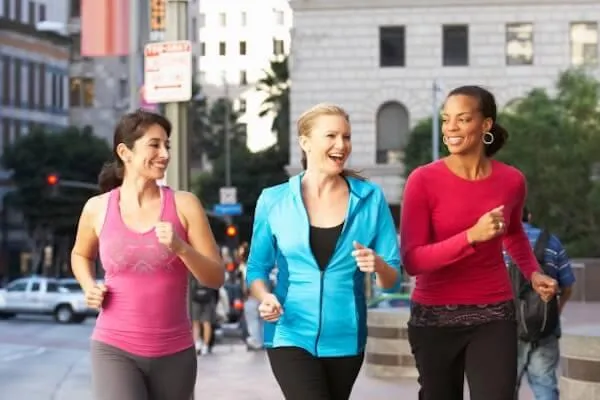Read Our Latest Blogs

How Movement Helps Shift Your Emotional State
There’s something strangely heroic about getting out of bed and deciding to move your body on purpose. It’s not that the movement itself is difficult—it’s that modern life has engineered virtually every excuse not to. Elevators exist. Remote controls exist. We now have apps that will bring us a cheeseburger without so much as a trip to the door.
So it’s understandably baffling, and more than a little annoying, to learn that our mental health—our very emotional well-being—depends on this archaic habit of putting one foot in front of the other repeatedly. But it does. Somehow, maddeningly, it does.
The Inconvenient Truth About Bodies and Brains
The brain, as it turns out, is a peculiar lump of matter. It likes moving. Specifically, it likes you moving. This is because when you start flailing your limbs around in some sort of coordinated fashion—walking briskly, stretching like a confused cat, perhaps doing something vaguely aerobic—it triggers the release of things with names like serotonin and dopamine, which are essentially the biochemical equivalent of a high-five.
There’s also this rather marvelous compound called brain-derived neurotrophic factor, which I mention not to impress you (though I do hope it worked), but because it actually encourages the brain to keep itself sharp and not turn into pudding. You might think, “Well that’s jolly good,” and it is, except for the part where it requires you to do squats.
Short Walks, Long Leashes for the Soul
Let’s talk about walking, which is—how to put this—magical, but in a terribly understated way. A walk, especially one that takes you out among trees or at the very least away from glowing screens, is a peculiar little miracle. You begin in a sort of funk, your brain gently curdling in its own gloom, and by the end—without solving anything, mind you—you somehow feel steadier. More spacious inside your head.
There’s science behind this, of course, but you don’t need studies to tell you what your grandmother already knew. When things feel awful, go outside and move your legs.
The Curious Case of Dance and Dignity
Now, dancing is another matter entirely. It straddles that fine line between joyous release and deeply humiliating spectacle. But in private, where no one is likely to judge you or call the authorities, it becomes a kind of primal exorcism. One flail of the arms, one reckless hip swivel, and suddenly the mood shifts. You are no longer a sad, stationary creature swaddled in anxiety. You are a slightly uncoordinated god of rhythm.
The mental health benefits of dancing are well-documented, but even if they weren’t, they’d still be obvious to anyone who has ever danced to ABBA alone in the kitchen and come out the other side smiling like a fool.
The Problem With “Exercise” and the Solution of Moving Anyway
The term “exercise” is, unfortunately, ruined. It conjures up images of Lycra-clad zealots leaping about with terrifying enthusiasm. What we really mean when we talk about movement that lifts the mood is something less... formal. More stumbling around your house doing chores with unnecessary flair. More impromptu calf raises while brushing your teeth. Less “fitness,” more fidgeting with flair.
The key, you see, is not in achieving a particular heart rate but in simply moving. Your body craves it. Your mind, oddly reluctant at first, eventually comes around and thanks you for it in its own mysterious way, usually by becoming marginally less inclined to spiral into despair.
Why Movement Works Even When You’re in the Depths
On the worst days—the ones where even changing socks feels ambitious—movement becomes less about endorphins and more about inertia. The principle of physics, not laziness. An object at rest will remain at rest, etc.
But if you can coax yourself, even under protest, into some tiny physical action—sitting upright, swinging your legs off the bed, standing by the window—your body begins to remember what it's for. It was never meant to be a sedentary meat sack of worries. It was made to do things. And in doing them, the mind (ever the dramatic sibling) starts to quiet down a bit.
A Final, Wandering Thought
There’s a small and satisfying kind of victory in choosing to move when you could just as easily not. You won’t always feel like it. You may never even feel like feeling like it. But the body, bless it, has a memory that predates all this technology and tedium. It knows that motion is medicine. It knows how to shift a stuck spirit.
So move. Stretch. Walk. Dance terribly. Swing your arms about as though casting off a very mild curse. Don’t do it because you “should.” Do it because your body wants to remember it’s still very much alive—and, quietly, it’s asking your mind to catch up.
© 2025 - All Rights Reserved.
* Disclaimer: This site is provided for educational purposes only. Always consult a professional before implementing anything new or any strategy discussed on this website. Some links, banners, and product mentions on this site are affiliate links. which means if you make a purchase, we may earn a commission. It costs you nothing extra, but it helps us continue operating. We only recommend products we believe in and offer a full refund should you not get the results you want. Results may vary.
Also this site is not a part of Google, Inc. or Google.com, nor is it sponsored or endorsed by Google. YouTube is a trademark of Google, Inc.
